
Photo by Kevin Schmid on Unsplash
In recent decades, millions of civilians have borne the brunt of armed conflicts, witnessing severe violations of international humanitarian and human rights laws, at times escalating to genocide, war crimes, or crimes against humanity.
Human Rights Law (HRL) and International Humanitarian Law (IHL) serve as pillars upholding human dignity during armed conflicts. This exploration delves into the practical application and enforcement challenges faced by these crucial legal frameworks, especially in the tumult of wartime. As our world grapples with prolonged conflicts, this examination assesses the viability of implementing HRL and IHL. Drawing on foundational principles and real-world cases, the chapter scrutinizes the enforcement of these laws, extricating associated complexities. The study aims to scrutinize national and international enforcement structures, pinpoint gaps, and propose actionable recommendations for a more effective legal response.
In recent decades, millions of civilians have borne the brunt of armed conflicts, witnessing severe violations of international humanitarian and human rights laws, at times escalating to genocide, war crimes, or crimes against humanity. Over the last 20 years, diverse entities, from governments and rebels to politicians, diplomats, activists, demonstrators, and journalists, have frequently invoked these laws in discussions and resolutions. These laws play a pivotal role in United Nations Security Council and Human Rights Council deliberations, shaping the discourse in opposition movements, NGO reports, military training, and diplomatic negotiations. Guided by legal advice, military commanders now consider international human rights and humanitarian laws as indispensable factors. Furthermore, defence lawyers and prosecutors in international and, to some extent, domestic tribunals consistently reference these laws, laying the foundation for well-founded judgments.
The shared objective of international human rights law and international humanitarian law is to uphold the dignity and humanity of all individuals. Over time, the General Assembly, the Commission on Human Rights, and the more recent Human Rights Council have acknowledged that parties involved in armed conflicts are legally bound to uphold the rights of those affected. While differing in scope, both bodies of law provide essential protections to individuals in armed conflicts, whether they are civilians, individuals no longer directly involved in hostilities or active participants. Recognized by international and regional courts, United Nations organs, treaty bodies, and human rights special procedures, these laws are considered applicable to situations of armed conflict, offering complementary and mutually reinforcing safeguards.
There is a clear need for a comprehensive reevaluation of existing frameworks in this article. Human rights and humanitarian principles must be strengthened in the face of the realities of armed conflict. As a result of this exploration, stakeholders are urged to enhance the endurance of these principles against the relentless threats of war.
Overview of Human Rights Law and International Humanitarian Law
International human rights law is a set of global standards crafted to safeguard and champion the rights of every individual. These rights, inherent to all regardless of nationality, residence, gender, origin, colour, religion, language, or any other status, are interconnected, interdependent, and indivisible. They find expression and assurance in treaties, customary international law, general principles, and soft law. Human rights come with both entitlements and responsibilities.
This legal framework imposes obligations on states, dictating specific actions or abstentions to foster and safeguard the human rights and fundamental freedoms of individuals or groups. On the other hand, international humanitarian law is a set of rules aiming, for humanitarian reasons, to mitigate the impact of armed conflicts. It shields those not participating or no longer participating in hostilities and limits the methods and means of warfare. Importantly, it applies exclusively to situations of armed conflict and is distinct from the law governing the legitimacy of the use of force.
Despite the prohibition of force under the United Nations Charter, international humanitarian law must be universally applied in armed conflicts, irrespective of the justifiability of a party's cause. This equality among belligerents distinguishes armed conflicts, governed by international humanitarian law, from crimes subject only to criminal and human rights law in law enforcement.
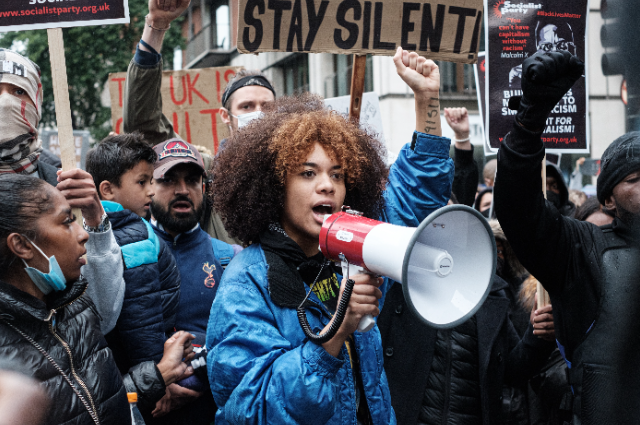
Traditionally, human rights law was thought to apply in times of peace, and humanitarian law in armed conflict. However, modern international law recognizes this distinction as inaccurate. Human rights law continues to apply during armed conflicts, as the inherent rights of all individuals can be impacted both in times of peace and war. Consequently, human rights law and humanitarian law are considered complementary sources of obligations during armed conflicts.
Instances such as the Human Rights Committee's general comments and the Human Rights Council's resolutions emphasize the continued application of human rights law in armed conflict, acknowledging the complementary and mutually reinforcing nature of both bodies of law. Despite these clarifications, questions persist regarding the practical implementation of the protections guaranteed by these laws, leading to confusion about obligations, standards, and beneficiaries in conflict situations.
Key Principles and Concepts
Though international human rights law and international humanitarian law have distinct historical origins, both share a common goal: protecting every individual and upholding principles of respect for life, well-being, and human dignity. Legally, both are rooted in a series of international treaties, reinforced by customary international law.
International human rights law is applicable at all times, whether in times of peace or war, while international humanitarian law specifically applies during armed conflicts.
The complementarity and mutual reinforcement of these laws in armed conflict are crucial. Certain violations of these laws can be considered crimes under international criminal law, making additional legal frameworks, such as the Rome Statute of the International Criminal Court, relevant. International criminal law and the prosecution of war crimes not only enforce international humanitarian law but also contribute to its clarification and development.
Other legal frameworks, including international refugee law and domestic law, often come into play, influencing the scope of human rights protections available. In navigating the complex legal landscape, the interconnectedness of these bodies of law emphasizes the need for a comprehensive and complementary approach to ensure effective protection for individuals in various contexts.
- International human rights law
International human rights law encompasses a set of global standards aimed at safeguarding and promoting the inherent rights of all individuals. These rights, applicable to everyone regardless of nationality, residence, gender, or other factors, are articulated in the Universal Declaration of Human Rights and various international treaties, including core universal human rights treaties.
Key treaties
- International Covenant on Economic, Social and Cultural Rights
- International Covenant on Civil and Political Rights
- International Convention on the Elimination of All Forms of Racial Discrimination
- Convention on the Elimination of All Forms of Discrimination against Women
- Convention against Torture and other Cruel, Inhuman or Degrading Treatment or Punishment
- Convention on the Rights of the Child
- - International Convention on the Protection of the Rights of All Migrant Workers
- International Convention for the Protection of All Persons from Enforced Disappearance
- Convention on the Rights of Persons with Disabilities
These treaties are complemented by customary international law, resolutions by global bodies like the General Assembly and the Human Rights Council, case law, declarations, guiding principles, and other soft law instruments. Although not all are legally binding, they contribute to defining human rights norms.
International human rights law extends beyond treaty-listed rights, incorporating customary international law binding on all states, including those not party to specific treaties. Some rights, such as the prohibition of torture, slavery, genocide, racial discrimination, crimes against humanity, and the right to self-determination, hold a special status as peremptory norms, overriding other international obligations.
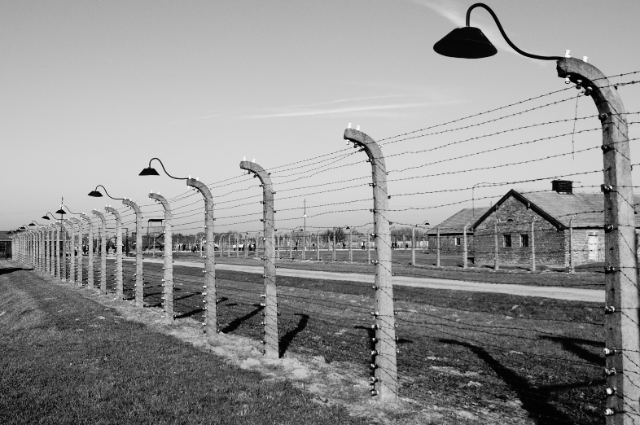
The Human Rights Committee and other bodies emphasis that certain rights, like the right to life, prohibition of torture, and freedom of thought, are non-derogable, even in exceptional circumstances. The International Court of Justice increasingly considers states' human rights obligations in armed conflict situations, affirming the continuous applicability of human rights law.
Human rights treaty bodies, such as the Human Rights Committee, interpret and clarify norms through general comments. These bodies play a crucial role in monitoring the implementation of human rights obligations, providing guidance on the content and scope of relevant norms.
2. International humanitarian law
International humanitarian law is a set of regulations designed to mitigate the impact of armed conflicts on various groups, including civilians, combatants, and those no longer participating in the conflict. It focuses on two main areas: protecting individuals and imposing restrictions on the means and methods of warfare. The foundation of international humanitarian law lies in treaties and customary international law.
Key instruments
- The Hague Regulations on Land Warfare
- Geneva Convention (I) for the Amelioration of the Condition of the Wounded and Sick in Armed Forces in the Field
- Geneva Convention (II) for the Amelioration of the Condition of Wounded, Sick and Shipwrecked Members of Armed Forces at Sea
- Geneva Convention (III) relative to the Treatment of Prisoners of War
- Geneva Convention (IV) relative to the Protection of Civilian Persons in Time of War
- Protocol Additional to the Geneva Conventions and relating to the Protection of Victims of International Armed Conflicts (Protocol I)
- Protocol Additional to the Geneva Conventions and relating to the Protection of Victims of Non-International Armed Conflicts (Protocol II)
The Hague Regulations are generally considered customary international law, applicable to all states regardless of acceptance. The Geneva Conventions have achieved universal ratification, and many of their provisions are regarded as customary international law applicable in any armed conflict.
Other treaties regulating weapons use, production, and stockpiling are also considered part of international humanitarian law, as they govern the conduct of armed hostilities and impose limitations on certain weapons.
The International Committee of the Red Cross (ICRC) plays a special role in international humanitarian law, authorized to visit prisoners, organize relief operations, contribute to family reunification, and engage in humanitarian activities during international and non-international armed conflicts. The ICRC interprets and promotes adherence to international humanitarian law, addressing breaches, enhancing understanding, dissemination, and development of the law in armed conflicts.
Principles of International Human Rights Law and International Humanitarian Law
Human rights, inherent to all individuals regardless of nationality, residence, gender, or any other status, are interconnected, interdependent, and indivisible. Expressed in legal norms like treaties, customary international law, and general principles, international human rights law dictates state obligations to promote and protect human rights and fundamental freedoms. These encompass both rights and obligations, with states bound to respect, protect, and fulfill these rights.
In contrast, international humanitarian law aims to mitigate armed conflict effects on individuals, including civilians, combatants, and those not participating. It focuses on protecting individuals and restricting means and methods of warfare. While these laws may seem distinct, their substance is similar, safeguarding individuals in comparable ways. Notably, international humanitarian law introduces distinctions, especially between civilians and combatants, unlike international human rights law.
1. Protected Rights
- International humanitarian law traditionally formulates objective rules for states and armed groups, while international human rights law expresses subjective rights of individuals versus the state.
- Both protect certain rights, with international humanitarian law focusing on those particularly endangered by armed conflicts.
Notably, international humanitarian law safeguards civil and political rights, economic, social, and cultural rights, and group rights during armed conflicts.
2. Modes of Protection
- International human rights law imposes obligations to respect, protect, and fulfill rights, offering criteria for evaluating violations.
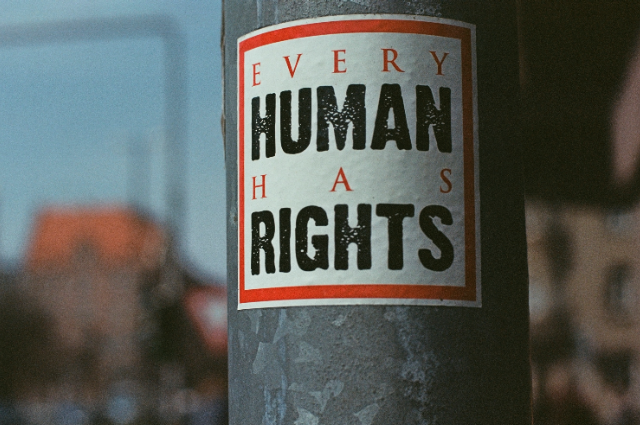
International humanitarian law, while traditionally not using these terms, involves obligations categorized similarly. States can violate both sets of laws through action, omission, or inadequate action.
3. Principle of Distinction in IHL
- A key difference is that in international humanitarian law, substantive protection depends on the individual's category, unlike international human rights law where all individuals benefit from all rights.
- Protection under international humanitarian law varies for civilians and combatants, impacting the conduct of hostilities and the treatment of individuals in the power of the enemy.
In both bodies of law, responsibilities extend to state and non-state actors, albeit with distinctions. Duty bearers, whether primary subjects like states or international organizations, or secondary subjects like non-state actors, have positive and negative obligations to uphold human rights and humanitarian principles. These legal frameworks, despite differences, converge in promoting the well-being and dignity of individuals, particularly in situations of armed conflict.
Application of Human Rights Law in Armed Conflict
In the complex landscape of armed conflicts, the concurrent application of international human rights law and international humanitarian law is essential to ensure the protection of civilian populations. This section explores the nuances of this application, particularly focusing on the right to life and security, the prohibition of torture and inhuman treatment, and the right to an adequate standard of living.
1. Right to Life and Security:
The right to life, a fundamental human right enshrined in various international instruments, takes a central position in armed conflicts. Common Article 3 of the Geneva Conventions and customary international law outline the obligations of States even before the outbreak of hostilities. Article 2 of the Universal Declaration of Human Rights (UDHR) and Article 6 of the International Covenant on Civil and Political Rights (ICCPR) reinforce the right to life. Despite the lack of a clear definition of "armed conflict," the International Criminal Tribunal's assertion that armed conflict exists when there is a resort to armed force between states provides interpretational guidance.
2. Prohibition of Torture and Inhuman Treatment
The absolute prohibition of torture and inhuman treatment, codified in Article 7 of the ICCPR and Article 3 of the Convention Against Torture, persists irrespective of armed conflict. However, challenges arise in defining the threshold of armed conflict, especially in low-intensity scenarios. The principle of universal jurisdiction, reiterated in the Convention Against Torture, emphasizes the global obligation to prosecute perpetrators. The blurring lines between international and non-international conflicts necessitate a nuanced understanding to ensure continuous protection.

3. Right to Adequate Standard of Living
The right to an adequate standard of living, including access to food, water, and shelter, is fundamental to human dignity.
Despite uncertainties in the definition of armed conflict, the obligations of States under human rights law endure. The International Covenant on Economic, Social and Cultural Rights (ICESCR), particularly Article 11, recognizes the right to an adequate standard of living. Challenges emerge in applying humanitarian law to low-intensity conflicts, raising questions about the extent of its protection.
Armed Conflict as the Trigger
1. International Armed Conflict
The Geneva Conventions and Protocol I set the framework for international armed conflicts, emphasizing the application even without a recognized state of war. Article 2 of the Geneva Conventions outlines the scope, yet the lack of a clear definition creates challenges. The continued applicability of human rights law during hostilities underscores the importance of a seamless transition between legal frameworks. While the focus is on states' armed forces, evolving conflicts demand a reevaluation of traditional distinctions.
2. Non-International Armed Conflict
Article 3 of the Geneva Conventions and Protocol II recognize armed conflicts not of an international character. The International Criminal Tribunal's criteria for non-international armed conflicts, including protracted armed violence and organized armed groups, offer guidance. Challenges persist in determining the degree of organization for non-state armed groups. The evolving nature of conflicts demands a nuanced approach, particularly in cases of asymmetry and non-state actors.
3. Distinction between International and Non-International Armed Conflict
Efforts to eliminate distinctions between international and non-international armed conflicts acknowledge the evolving nature of contemporary conflicts. International human rights law's expansion, seen in instruments like the Optional Protocol to the Convention on the Rights of the Child, challenges the traditional divide. As distinctions blur, legal frameworks must adapt to ensure coherent and comprehensive protection. Combatant immunity and rules on military occupation, inherent in international armed conflicts, necessitate careful consideration in the non-international context.
As armed conflicts evolve, the application of human rights and humanitarian law requires continuous refinement.
Striking a balance between the protection of civilians and the demands of military necessity remains a complex task.
Ongoing dialogue and adaptation of legal principles are crucial to address uncertainties and ensure the efficacy of international law in safeguarding human rights in times of conflict.
Rights of Combatants in Armed Conflicts
While armed conflicts impose restrictions on individuals' actions, combatants, particularly those captured, are entitled to certain rights. This section explores the rights of combatants, emphasizing fair trial and due process, the prohibition of arbitrary detention, and the treatment of prisoners of war.
1. Fair Trial and Due Process
The right to a fair trial and due process, foundational principles in international law, extends even to combatants. Common Article 3 of the Geneva Conventions emphasizes the judicial guarantees during non-international armed conflicts. The International Covenant on Civil and Political Rights (ICCPR), in Articles 9 and 14, reinforces the right to liberty and fair trial. Combatants, whether detained during international or non-international armed conflicts, should be afforded a fair and impartial trial, ensuring legal representation and the presumption of innocence until proven guilty. Striking a balance between security concerns and individual rights is imperative.

2. Prohibition of Arbitrary Detention
Combatants, when captured, are entitled to protection against arbitrary detention. Arbitrary detention, prohibited under Article 9 of the ICCPR, emphasizes the need for a lawful basis for detention and judicial review. The principle applies during both international and non-international armed conflicts. The International Committee of the Red Cross (ICRC) plays a crucial role in monitoring and ensuring that the detention of combatants complies with international law. Challenges arise in determining what constitutes "arbitrary" detention, necessitating a thorough examination of legal justifications for captivity.
3. Treatment of Prisoners of War
The treatment of prisoners of war (POWs) is governed by the Third Geneva Convention. POWs are entitled to humane treatment, protection against acts of violence, and respect for their person and honor. They should not be subjected to torture, cruelty, or degrading treatment. Additionally, POWs are protected from reprisals and collective punishments. The International Humanitarian Law (IHL) principles graves the importance of distinguishing between combatants and civilians, ensuring that those who no longer take part in hostilities are treated with humanity. Challenges emerge in conflicts where non-state actors blur the lines between combatants and civilians.
Balancing the rights of combatants with the necessities of armed conflicts is a delicate task for the international legal framework. Emphasizing fair trial and due process, prohibiting arbitrary detention, and ensuring humane treatment of prisoners of war reflects a commitment to upholding human rights even in times of conflict.
Continuous efforts are required to adapt these principles to the evolving nature of armed conflicts and to address challenges posed by asymmetrical warfare and non-state actors. The rights of combatants serve not only as legal safeguards but also as crucial elements in fostering a more just and humane international system.
Enforcement Mechanisms for Human Rights Law
Since the ratification of the Universal Declaration of Human Rights in 1948, the international community has developed various mechanisms for enforcing and protecting human rights. This section examines the enforcement mechanisms for economic, social, and cultural rights (ESCR) at both the international and national levels, addressing challenges in implementation and prosecution.
International Courts and Tribunals
1. International Criminal Court (ICC)
The ICC plays a crucial role in prosecuting individuals for serious international crimes, including those related to economic, social, and cultural rights. Its jurisdiction, outlined in the Rome Statute, encompasses crimes such as genocide (Article 6), war crimes (Article 8), and crimes against humanity (Article 7). The ICC contributes to the enforcement of human rights through the accountability of individuals responsible for egregious violations, ensuring that perpetrators are held responsible before an international court.
2. International Court of Justice (ICJ)
The ICJ serves as the principal judicial organ of the United Nations and adjudicates legal disputes between states. While it doesn't have a specific focus on human rights, its decisions can indirectly impact human rights by addressing issues related to state responsibility for violations. Article 38 of the ICJ Statute outlines the sources of international law, including treaties, custom, and general principles. The ICJ's role is vital in the peaceful resolution of conflicts and the interpretation of international law, which includes human rights norms.
National Courts and Jurisdiction
National courts play a crucial role in enforcing human rights, including economic, social, and cultural rights, at the domestic level. States are obligated to incorporate international human rights norms into their legal systems, as stipulated by provisions like Article 2(1) of the International Covenant on Economic, Social and Cultural Rights (ICESCR). National courts can address violations through legal proceedings, ensuring accountability and redress for victims. However, challenges may arise when national legal systems lack the capacity or willingness to address human rights abuses effectively.
Challenges in Implementation and Prosecution
Despite the existence of international and national mechanisms, challenges persist in the effective enforcement of economic, social, and cultural rights.
1. Committee on Economic, Social, and Cultural Rights (CESCR)
The CESCR, tasked with monitoring state parties' fulfillment of their obligations under the ICESCR, plays a vital role. Articles 16 and 17 of the ICESCR require states to prepare reports every five years on the situation of ESCR in their country, which are reviewed by the CESCR. The CESCR examines the extent to which ESCR are being achieved by state parties, as outlined in Article 2 of the ICESCR. Challenges include low public awareness, the ad hoc growth of the treaty body, and the absence of comprehensive follow-up mechanisms. Efforts are needed to enhance the effectiveness and visibility of CESCR's work.
2. Office of the United Nations High Commissioner on Human Rights (OHCHR) and Human Rights Council
The OHCHR collaborates with governments to strengthen human rights capabilities, as mandated by Article 1 of the OHCHR Statute. However, challenges arise in achieving universal adherence, and the Human Rights Council, established under Article 68 of the UN Charter, faces criticism for inconsistency and selectivity in addressing human rights concerns. Reform efforts are ongoing to enhance the Council's efficiency, reflecting the principles outlined in Articles 55 and 56 of the UN Charter.
3. UN Human Rights Treaty Mechanisms
Treaty-monitoring bodies, such as the Committee on the Elimination of Discrimination against Women (CEDAW) and the Committee on the Rights of the Child (CRC), play essential roles. CEDAW, outlined in Articles 10-13 of the Convention, monitors the progress of women's rights, while the CRC, as outlined in Articles 7-32, monitors the implementation of the Convention on the Rights of the Child. Challenges include delayed reporting by states and varying levels of compliance, emphasizing the importance of Articles 4 and 44 of CEDAW and Articles 44 and 45 of the CRC. Strengthening these mechanisms and addressing non-compliance is crucial for effective enforcement.
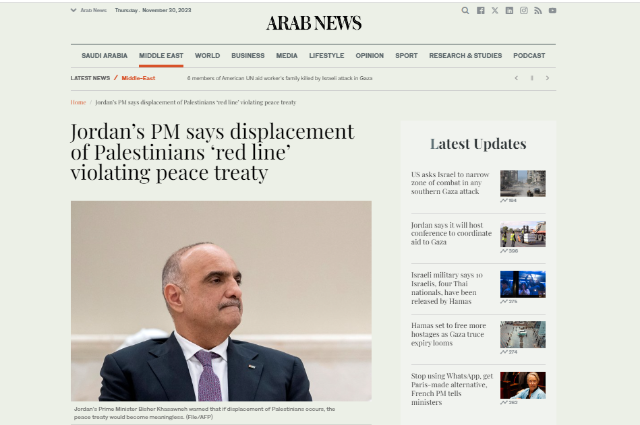
4. Enforcement Mechanisms and Challenges
The absence of effective measures for states that commit serious human rights abuses, the principle of state sovereignty outlined in Article 2(7) of the UN Charter, and the limitations of intervention mechanisms are among the persistent challenges.
while significant progress has been made in establishing enforcement mechanisms for economic, social, and cultural rights, ongoing efforts are necessary to overcome challenges and strengthen the global human rights framework.
Enhancing awareness, improving the efficiency of international institutions, and addressing the complexities of state sovereignty are key components of advancing the enforcement of human rights at both the international and national levels.
Accountability Mechanisms in Armed Conflict
Ensuring accountability for violations of international human rights and humanitarian law is pivotal in upholding the rule of law. This section examines the mechanisms and case law that underpin the accountability framework for state and non-state actors involved in armed conflicts.
State Responsibility and Individual Accountability
States bear the primary responsibility for ensuring accountability for violations. The International Court of Justice (ICJ), in the case of Bosnia and Herzegovina v. Serbia and Montenegro, held that a state could be held responsible for failing to prevent genocide. Concurrently, individual accountability is established through international and hybrid tribunals. The International Criminal Tribunal for the Former Yugoslavia (ICTY), for instance, prosecuted individuals for war crimes, emphasizing personal responsibility.
In the Prosecutor v. Tadić case before the ICTY, the court clarified that individuals can be held criminally responsible for violations of the laws and customs of war, recognizing the principle of individual criminal responsibility in armed conflicts.
Reparation and Restitution
Reparation is a crucial facet of accountability. In the aftermath of armed conflicts, victims have the right to restitution, compensation, rehabilitation, satisfaction, and guarantees of non-repetition. The ICC, in the case of Lubanga Dyilo, outlined the forms of effective reparation, including restitution of liberty, enjoyment of human rights, and compensation proportional to the gravity of the violations.
The ICC's decision in the case of Al Mahdi marked a significant development in reparations. The court ordered individual and collective reparations for victims of cultural destruction in Mali, showcasing the diverse forms that reparations can take, from monetary compensation to symbolic measures.
Truth and Reconciliation Commissions
Post-conflict justice often involves truth and reconciliation commissions. These commissions, as exemplified by South Africa's Truth and Reconciliation Commission, provide a platform for victims and perpetrators to share their experiences. While not replacing prosecutions, they contribute to accountability by revealing the truth about past atrocities.
The establishment of the Truth and Reconciliation Commission in Sierra Leone following its civil war exemplifies a national initiative to address gross human rights violations. It played a crucial role in uncovering the truth, contributing to healing, and recommending reparative measures. The Commission's work demonstrated the significance of acknowledging and addressing past wrongs for sustainable peace.
International Compensation Commissions
International bodies, like the United Nations Compensation Commission, serve as alternative mechanisms for accountability. Such commissions, as seen in the aftermath of the Iraq-Kuwait conflict, assess claims and provide compensation for losses and damages caused by unlawful actions.
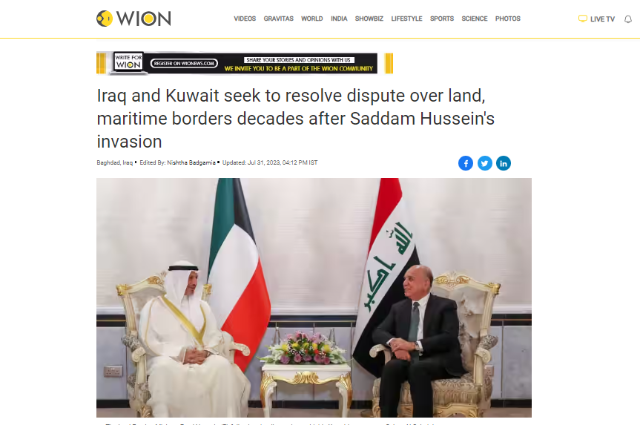
The compensation awarded by the United Nations Compensation Commission in the aftermath of Iraq's invasion of Kuwait exemplifies the international community's commitment to holding states accountable for their actions. The case underscored the importance of restitution for victims and the responsibility of states for the consequences of their aggressive actions.
Official Commissions of Inquiry with a Human Rights Mandate
Official commissions of inquiry, initiated by governments or international bodies, play a crucial role in investigating human rights violations. These commissions, as seen in various national contexts, recommend measures for accountability, including prosecutions and institutional reforms.
The International Court of Justice, in the case of the Construction of a Wall in the Occupied Palestinian Territory, held that Israel had an obligation to make reparations for the damage caused, emphasizing the state's responsibility for violations committed in the context of armed conflict. The case highlighted the role of international law in addressing the consequences of military actions and the need for reparations for affected individuals and communities.
Accountability mechanisms, backed by robust legal frameworks and illustrated through diverse case law, form the backbone of addressing violations in armed conflict. Whether through international tribunals, truth commissions, compensation bodies, or official inquiries, these mechanisms collectively contribute to justice, reparations, and the prevention of future atrocities. They stand as pillars of a just and accountable international order, promoting the principles of humanity, dignity, and the rule of law in times of conflict.
Enforcement Mechanisms for International Humanitarian Law
International Humanitarian Law (IHL) serves as a critical framework for protecting individuals during armed conflicts. Enforcing these principles is paramount to minimizing human suffering. This section delves deeper into the enforcement mechanisms, focusing on the pivotal role of international committees and organizations, specifically the International Committee of the Red Cross (ICRC) and the United Nations Security Council. Furthermore, it addresses the multifaceted challenges associated with implementing and ensuring compliance with IHL, substantiating the discussion with legal provisions and case laws.
Role of International Committees and Organizations
1. International Committee of the Red Cross (ICRC)
The ICRC's role in IHL enforcement is rooted in various legal provisions. Article 3 of the Geneva Conventions grants the ICRC the right to offer its services for the protection of individuals affected by armed conflicts. The Additional Protocols of 1977 reaffirm and expand the ICRC's mandate, emphasizing its role in humanitarian activities, ensuring respect for IHL, and engaging in confidential dialogues with conflicting parties. The Statutes of the ICRC further underscore its neutrality and impartiality.
In the Tadić case before the International Criminal Tribunal for the former Yugoslavia (ICTY), the tribunal acknowledged the ICRC's role in the development and interpretation of IHL. It recognized the ICRC's commentary on the Geneva Conventions as an authoritative source for understanding the Conventions' provisions.
2. United Nations Security Council
The UNSC's authority to enforce IHL is grounded in Chapter VII of the UN Charter, empowering it to address threats to international peace and security. Resolution 1674 explicitly recognizes the UNSC's role in ensuring accountability for crimes against humanity and war crimes. Resolutions, such as 1970 and 1973 concerning Libya, exemplify the UNSC's use of sanctions and authorization of force to address IHL violations.
The establishment of the International Criminal Tribunal for Rwanda (ICTR) and the International Criminal Tribunal for the former Yugoslavia (ICTY) by UNSC Resolutions 955 and 827, respectively, demonstrate the UNSC's commitment to prosecuting individuals responsible for grave IHL violations.
Challenges in Implementation and Compliance
1. Impunity and Lack of Accountability
The Rome Statute of the International Criminal Court (ICC) addresses the issue of impunity. Article 5 establishes the ICC's jurisdiction over war crimes, and Article 17 emphasizes the principle of complementarity, urging states to prosecute individuals responsible for IHL violations.
The ICC's involvement in cases like the situation in Darfur highlights the court's role in challenging impunity and holding individuals accountable for war crimes and crimes against humanity.
2. Non-State Actors and Asymmetrical Warfare
The customary nature of IHL, reflected in Article 3 common to the Geneva Conventions, applies to non-state actors. Additional Protocol II recognizes the obligations of non-state armed groups, emphasizing the principle of distinction.
The Armed Activities case before the International Court of Justice (ICJ) clarified that even non-state actors could be held accountable for breaches of IHL.
3. Weaknesses in Monitoring and Reporting
The UNSC, in Resolution 2286, condemned attacks against medical facilities in conflict situations, emphasizing the importance of monitoring and reporting IHL violations.
The Special Court for Sierra Leone, while not directly addressing monitoring issues, highlighted the significance of evidence in establishing individual criminal responsibility for IHL violations.
4. Political Considerations and Selective Enforcement
The Nuremberg Principles, formulated after World War II, emphasize the individual criminal responsibility of leaders, mitigating the impact of political considerations on IHL enforcement.
The Nuremberg Trials set a precedent by holding high-ranking officials accountable for crimes against peace, war crimes, and crimes against humanity, regardless of political considerations.
5. Inadequate Resources and Capacities
The Rome Statute addresses the ICC's resources, emphasizing the need for cooperation from states to ensure the court's effective functioning.
The Lubanga case before the ICC highlighted challenges related to witness protection, illustrating the practical aspects of resource constraints in ensuring accountability.
Efficient enforcement of IHL demands a comprehensive approach involving international organizations and legal frameworks. The ICRC and the UNSC, backed by legal provisions and supported by case laws, play instrumental roles. Addressing challenges through established mechanisms, legal instruments, and learned lessons from past cases is crucial for fostering a culture of accountability and ensuring that IHL remains a robust protector of human rights in times of armed conflict.
Case Studies
Analyzing specific Armed Conflicts
1. Legal Implications of the Syrian Civil War
The Syrian Civil War, now spanning over a decade, has evolved into a dire humanitarian catastrophe. With over 150,000 casualties, 2.5 million refugees, and 9.3 million Syrians in need of assistance, the conflict has triggered the application of international legal doctrines, most notably the Responsibility to Protect (R2P).
Breaches of International Law
The conflict has witnessed severe breaches of international humanitarian law (IHL) and international human rights law (IHRL).
- Protection of civilians and distinction
Both government forces and opposition groups have violated the principle of distinction, a key component of Additional Protocol I to the Geneva Conventions, designed to safeguard civilians during armed conflicts.
- Torture and inhuman treatment
The absolute prohibition of torture, embedded in customary international law and treaties such as the Convention Against Torture, has been disregarded, with evidence of widespread abuse.
- Starvation as a method of warfare
Prohibitions against using starvation as a method of warfare, outlined in Additional Protocol II, have been flouted, notably in besieged areas like Yarmouk.
- Chemical and biological weapons
The use of chemical weapons, strictly forbidden under the Chemical Weapons Convention and customary international law, has been reported, escalating the gravity of the conflict.
- Protection of humanitarian relief and medical personnel
Essential provisions of the Geneva Conventions (Article 3) mandating the protection of medical personnel and facilities have been violated, hindering crucial healthcare services.
- Access to humanitarian relief
Denial of access to humanitarian aid, a violation of the Geneva Conventions, has been documented, exacerbating the suffering of civilians.
Responsibility of the International Community
- Responsibility to Protect (R2P) Doctrine
Developed after the failures in Rwanda and Srebrenica, R2P asserts the dual responsibility of the state and the international community to prevent and respond to mass atrocities.
- Security Council Challenges
The UN Security Council, the primary organ responsible for international peace and security under Chapter VII of the UN Charter, has faced impediments, including vetoes, hindering decisive action.
- Debate over "Humanitarian Military Intervention"
Legal Scope for Third State Military Intervention
1. Prohibition of the Use of Force (Article 2(4) UN Charter). Some argue against military intervention without Security Council authorization, citing Article 2(4) as a strict prohibition.
2. Justification for Humanitarian Intervention. Advocates, such as the UK government, contend that military intervention can be justified on grounds of overwhelming humanitarian necessity.
3. Development of a Doctrine. The debate revolves around the idea of developing a customary international law allowing for "humanitarian military intervention."
Despite widespread breaches of international law, the Syrian Civil War reflects the complex interplay between state sovereignty and the imperative to protect human rights. The practical challenges and the lack of consensus on "humanitarian military intervention" underscore the limitations of legal mechanisms in addressing real-world humanitarian crises. The ongoing conflict prompts a critical reevaluation of the efficacy of existing legal frameworks in preventing and responding to large-scale atrocities, leaving a stark reminder of the urgent need for international cooperation and a renewed commitment to the principles of justice and humanitarianism.
2. Legal Implications of the Conflict in Yemen
The Yemen conflict, once a response to governance failures, has evolved into a complex crisis demanding international attention. This analysis delves into the historical roots, legal dimensions, and the impact of external interventions, shedding light on the intricacies that define this multifaceted conflict.
Historical Framework
Originating in 2011, the Yemen conflict emerged from discontent with the government's failure to address economic woes, insecurity, and corruption. Historical nuances include the 1990 integration of the Yemen Arab Republic and the Peoples’ Democratic Republic of Yemen, leading to subsequent political divisions. The Houthi insurgency, beginning in 2004, marked a turning point, escalating tensions and violence.
President Saleh's resignation in 2011 and the subsequent rise of Abd-Rabbu Mansour Hadi failed to bring stability. The Houthi takeover in 2014, Hadi's call for international intervention, and the subsequent involvement of external actors further complicated the situation.
Legal Framework of Armed Conflict
Examining the legal underpinnings, International Humanitarian Law (IHL) provides a framework for categorizing armed conflicts into International Armed Conflict (IAC) and Non-International Armed Conflict (NIAC).
A) International Armed Conflict (IAC)
Governed by Common Article 2 of the Geneva Convention, IAC involves conflicts between states, irrespective of recognition. The engagement of external actors and international intervention may elevate a conflict to IAC status.
B) Non-International Armed Conflict (NIAC)
Regulated by instruments such as Common Article 3 of the Geneva Convention and Additional Protocol II, NIAC involves conflicts between a state and organized armed groups. Key elements include intensity of hostility and the involvement of organized armed groups.
Yemen Conflict: NIAC or IAC?
The Yemen conflict aligns predominantly with Non-International Armed Conflict. The Houthi insurgency, which gained momentum from 2004, fulfilled the criteria for NIAC, with the intensity of hostility and involvement of organized armed groups shaping the conflict dynamics. Despite external interventions, the core nature of the conflict has not shifted fundamentally.
Intervention Dynamics
- Iran's Intervention
Despite supporting Houthi forces, Iran's actions fall short of transforming the conflict into an International Armed Conflict. The lack of overall control and specific instructions to the Houthis diminishes Iran's direct attribution to Houthi hostilities.
- Saudi-led Coalition Intervention
While supporting Yemeni government forces, the Coalition's actions do not elevate the conflict to an International Armed Conflict. The absence of overall control and specific instructions over the government forces maintains the classification as a Non-International Armed Conflict.
Legal Implications
a) Humanitarian Law and Civilian Protection
Adherence to IHL is crucial to mitigate civilian suffering. Parties involved must uphold principles that safeguard non-combatants, ensuring access to humanitarian aid and protection from harm.
b) Accountability and War Crimes
Legal mechanisms, including international tribunals, play a vital role in holding individuals accountable for violations of IHL. Investigating and prosecuting war crimes is imperative for justice and to deter future offenses.
c) UN Security Council Resolutions
International cooperation, especially through the UN Security Council, is essential for resolving conflicts. The global community must work collectively to find diplomatic solutions and enforce resolutions to bring about lasting peace.
the Yemen conflict, entrenched in historical divisions and exacerbated by external interventions, maintains its status as a Non-International Armed Conflict. Understanding the legal intricacies and implications is essential for crafting effective international responses. Prioritizing humanitarian principles, ensuring accountability, and fostering diplomatic efforts are imperative to bring stability to Yemen and alleviate the suffering of its people.
3. Recent Developments in Afghanistan
The recent developments in Afghanistan have given rise to intricate legal questions, particularly in the context of non-international armed conflicts (NIACs). This part scrutinizes the multifaceted dynamics involving the Taliban, National Resistance Front (NRF), Islamic State-Khorasan Province (IS-KP), and emerging armed groups, exploring their legal classifications and the implications of their actions under international humanitarian law (IHL) and international human rights law (IHRL).
Overview of NIACs in Afghanistan
Afghanistan, plagued by decades of conflict, has witnessed overlapping NIACs involving the Taliban, NRF, IS-KP, and new armed groups. The withdrawal of U.S. troops in August 2021 catalyzed significant shifts, with the Taliban assuming effective control.
1. National Resistance Front (NRF)
The NRF, formed in response to the Taliban's rise, represents forces loyal to the ousted government. The classification of the ongoing NIAC between the NRF and the Taliban raises questions about the continuity of the prior conflict. RULAC suggests that it is a continuation, necessitating a review of declassification criteria rather than a new assessment of intensity.
Reports indicate that despite claims of victory by the Taliban, the NRF remains active, sustaining armed confrontations. The situation is monitored for significant developments, and the conflict does not appear to threaten the Taliban's control.
Recognizing the NRF's legitimacy, Russia has offered to mediate between the NRF and the Taliban, underscoring the group's status as a relevant party in the conflict.
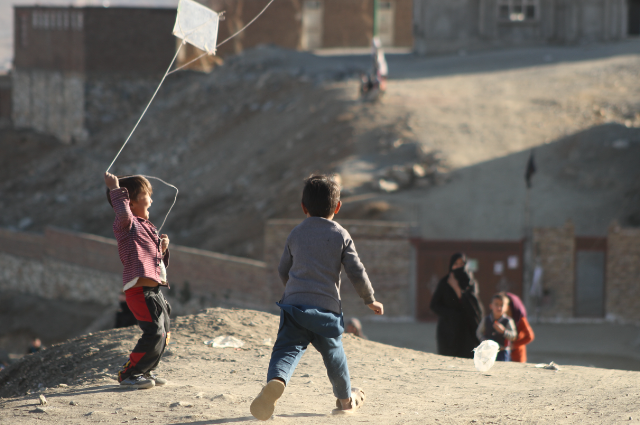
2. Islamic State-Khorasan Province (IS-KP)
Post-Taliban Takeover, Despite the Taliban's control, IS-KP continues its activities, engaging in attacks against both civilians and the Afghan government. The NIAC between Afghanistan and IS-KP persists, s evidenced by heightened violence in 2022.
Attacks by IS-KP increased following the Taliban's takeover, resulting in clashes between the two groups. Reports document numerous incidents, indicating the enduring nature of the conflict.
The fluctuating intensity does not negate the applicability of IHL, emphasizing that even during periods of reduced violence, the legal framework remains relevant.
3. Emergence of New Armed Groups
Grievances against the Taliban have spurred the emergence of new armed groups, including the Afghanistan Freedom Front and High Council for Resistance. Monitoring their actions is crucial for determining their status in potential NIACs. Current information is insufficient to conclusively classify these groups as parties to NIACs. Constant monitoring is necessary as the situation evolves.
4. Targeted Killing of Ayman al-Zawahiri
The U.S. drone strike that killed al-Qaeda leader Ayman al-Zawahiri triggered an instant international armed conflict (IAC) between the U.S. and Afghanistan. IHL applied to the first strike, contradicting arguments suggesting IHRL exclusivity. Acknowledging IHL's applicability to the first strike is vital for ensuring combatant immunity and adherence to IHL provisions, including the principle of precaution.
5. Spill-over Conflicts and Short-lived IACs
Conflicts from Pakistan spilled over into Afghanistan, manifesting in border skirmishes. Airstrikes by Pakistan in April 2022 escalated tensions, resulting in clashes between Pakistani and Afghan troops. Factors determining the degree of organization, including command structure and operational capacity, are crucial for assessing armed groups' eligibility as parties to NIACs.
All parties, including the Taliban as the de facto government, are bound by Article 3 common to the 1949 Geneva Conventions and customary IHL. Afghanistan's status as a party to Additional Protocol II is discussed, and the applicability of IHRL during armed conflict is emphasized.
Despite changes in government, existing IHL obligations persist, emphasizing the principle of the continuity of the State. Navigating the legal landscape of Afghanistan's evolving conflicts demands a nuanced understanding of the changing actors, their classifications, and the implications under international law. Constant monitoring, legal clarity, and adherence to IHL principles are imperative for addressing the complexities inherent in these dynamic non-international armed conflicts.
4. The Genocide in Palestine
The dire situation in Gaza, marred by widespread displacement and severe shortages of essential resources, necessitates a examination of its legal implications. This analysis delves into potential acts of genocide and war crimes, shedding light on recent atrocities while considering international legal provisions.
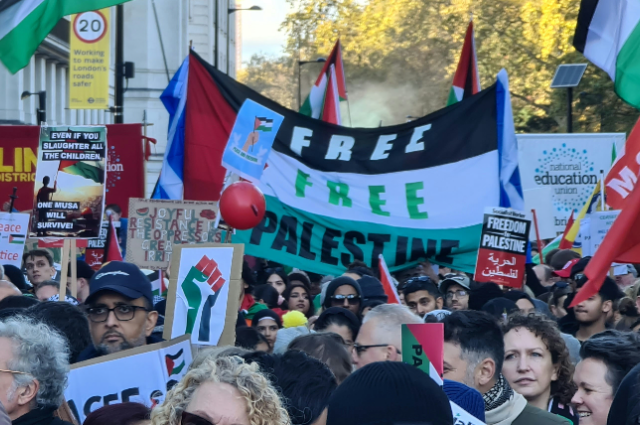
Genocide Concerns
The groundwork for legal scrutiny begins with the 1948 UN Convention on the Prevention and Punishment of Genocide, defining genocide as acts committed with specific intent to destroy, in whole or in part, a national, ethnic, racial, or religious group. Gaza's circumstances align with this definition, as the majority of those affected share common national, ethnic, and religious identities, presenting a vulnerable "group" susceptible to potential genocide. Disturbing plans to displace the population and the severe impact on civilians echo acts prohibited by the Genocide Convention.
War Crimes and Violations
Expanding the legal analysis encompasses war crimes under international humanitarian law, human rights law, and criminal law. Foundational principles such as proportionality, distinction, and precaution, designed to protect civilians in times of conflict, become critical focal points. Recent atrocities, including indiscriminate attacks on civilian areas, damage to vital infrastructure, and the looming threat of mass forcible transfer, raise significant concerns about compliance with these principles.
Key Legal Violations
1. Proportionality. Persistent attacks on civilian areas, causing casualties and destroying homes, may constitute war crimes, demanding strict justification for each specific attack.
2. Distinction. Indiscriminate attacks on civilians and civilian sites violate the principle of distinction, mandating a clear differentiation between combatants and non-combatants. The onus rests on the attacking force to justify each specific action.
3. Precaution. International humanitarian law necessitates all reasonable precautionary measures to minimize civilian casualties. Recent actions, including attacks on hospitals and places of worship, raise concerns about compliance with this fundamental principle.
4. Collective Punishment. The longstanding blockade of Gaza and the deprivation of essential resources may amount to collective punishment, strictly prohibited under Article 33 of the Fourth Geneva Convention.
5. Forcible Transfer. Statements and recommendations suggesting the relocation of the Palestinian population from Gaza to the Sinai Peninsula constitute a serious violation of international humanitarian law, specifically the prohibition on mass forcible transfer.
The Call for International Accountability
The urgency for a robust investigation by the International Criminal Court (ICC) becomes increasingly apparent to address the ongoing "justice crisis" in Israel and Palestine. Genuine accountability is essential to disrupt the cycle of violence perpetuated by a culture of impunity. The international community's role in ensuring justice and upholding human rights standards remains paramount to resolving the protracted conflict and fostering lasting peace in the region. Only through concerted efforts to uphold the rule of law can the complexities of the situation be navigated toward a more just and sustainable future.
Challenges Faced by International Bodies
The effectiveness of international bodies in upholding and enforcing legal frameworks has encountered various challenges, hindering their ability to address global issues consistently. These challenges include:
1. Political Interference
International bodies often face obstacles due to political interference, where powerful nations may exert influence to protect their interests, undermining impartial decision-making and enforcement.
2. Limited Enforcement Mechanisms
Despite the existence of international laws, many agreements lack robust enforcement mechanisms. This limitation diminishes the effectiveness of legal frameworks, allowing violations to persist without adequate consequences.
3. Sovereignty Concerns
The principle of state sovereignty sometimes hampers international bodies' interventions, as nations may resist external involvement in their internal affairs, even in cases of human rights abuses or violations of international law.
4. Resource Constraints
Insufficient resources, both human and financial, pose a significant challenge. International bodies may struggle to conduct thorough investigations, monitor compliance, and implement sanctions effectively.
5. Jurisdictional Complexities
Jurisdictional issues can impede the prosecution of individuals or states responsible for violations. The lack of a centralized global legal authority complicates efforts to hold perpetrators accountable.
Gaps in Legal Frameworks
Despite the existence of comprehensive legal frameworks, certain gaps and ambiguities contribute to challenges in addressing global issues. These gaps include:
1. Emerging Technologies
Rapid advancements in technology pose challenges for existing legal frameworks. Issues such as cyber warfare, artificial intelligence, and biotechnology may not be adequately addressed by current international laws.
2. Environmental Crimes
The legal framework for addressing environmental crimes is often fragmented and insufficient. Crimes like pollution, deforestation, and ecological damage lack standardized, enforceable regulations at the international level.
3. Corporate Accountability
Holding corporations accountable for human rights violations remains a gap in international law. Existing frameworks primarily focus on state responsibility, leaving a void in addressing abuses by powerful multinational entities.
4. Refugee Protections
The refugee crisis has exposed gaps in international law concerning the protection of displaced populations. Ambiguities in defining refugee status and inadequate mechanisms for burden-sharing among nations contribute to ongoing challenges.
Criticisms of Selective Enforcement
Selective enforcement of international law has been a subject of criticism, raising questions about the impartiality and consistency of legal interventions. Criticisms include:
- Political Bias
Selective enforcement based on political considerations undermines the credibility of international bodies. Instances where powerful nations receive preferential treatment or escape accountability erode confidence in the fairness of the global legal system.
- Regional Disparities
Enforcement priorities often exhibit regional disparities, with certain regions experiencing more scrutiny than others. This inconsistency perpetuates perceptions of a biased and inequitable international legal landscape.
- Security Council Dynamics
The UN Security Council's role in international enforcement actions has faced criticism for its structure, with veto powers influencing decisions. This dynamic can hinder swift and decisive responses to crises, particularly when geopolitical interests diverge.
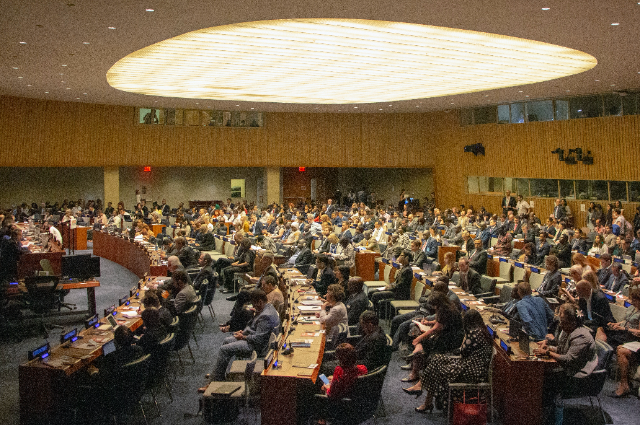
- Resource Allocation
Limited resources and competing priorities may lead to selective enforcement based on pragmatic considerations rather than the severity or urgency of a situation. This approach can compromise the overall efficacy of international legal interventions.
Addressing these critiques and bridging gaps in the legal framework requires concerted efforts from the international community. Reforms, enhanced collaboration, and a commitment to impartial enforcement are essential for strengthening the global legal system and ensuring its relevance in an ever-evolving world.
Recommendations for Improvement
Strengthening International Cooperation
1. Multilateral Diplomacy
Prioritize multilateral diplomatic efforts to foster collaboration among nations. Encourage open dialogue and consensus-building on pressing global issues, ensuring that diverse perspectives are considered in decision-making processes.
2. Conflict Prevention Initiatives
Invest in proactive conflict prevention initiatives to address underlying tensions before they escalate. Early intervention, facilitated through international cooperation, can help avert crises and minimize the need for reactive measures.
3. Resource Mobilization
Establish mechanisms for equitable resource mobilization, ensuring that international bodies have the necessary funds and expertise to effectively address challenges. Encourage contributions from both developed and developing nations to support shared goals.
Reforming Legal Mechanisms
1. Closing Legal Gaps
Undertake a comprehensive review of existing legal frameworks to identify and address gaps. Develop protocols to accommodate emerging challenges such as cyber warfare, environmental crimes, and corporate accountability, ensuring that the law remains relevant and adaptive.
2. Environmental Protections
Strengthen international laws related to environmental protections. Implement standardized regulations for addressing ecological crimes, pollution, and deforestation, with clear enforcement mechanisms to deter offenders.
3. Corporate Responsibility
Enhance legal provisions for holding corporations accountable for human rights violations. Develop international guidelines that outline corporate responsibilities and consequences for non-compliance, promoting ethical business practices.
Enhancing Accountability and Transparency
1. Independent Oversight Bodies
Establish independent oversight bodies with the authority to investigate and report on potential violations of international law. These bodies should operate transparently, free from political influence, to ensure accountability for all parties involved.
2. Refugee Protection Framework
Collaboratively develop a robust and inclusive refugee protection framework. Clarify definitions of refugee status, improve burden-sharing mechanisms among nations, and strengthen international cooperation to address the ongoing refugee crisis effectively.
3. Addressing Selective Enforcement
Implement measures to address concerns of selective enforcement. Foster transparency in decision-making processes, minimize political influences, and strive for consistency in holding nations accountable for violations, irrespective of their geopolitical status.
These recommendations aim to fortify the foundations of international law, making it more responsive, adaptive, and equitable. By prioritizing collaboration, addressing legal gaps, and enhancing accountability, the international community can contribute to a more just and effective global legal system.
Conclusion
An analysis of international law emphasises the pressing need to address existing challenges and rectify notable gaps within its framework. These gaps are particularly evident in areas such as corporate accountability, environmental safeguards, and responses to emerging global threats. To enhance the efficacy and adaptability of international law, a concerted call to action is required, emphasizing that the enforcement of international law is indispensable for instilling hope in its potential. The international community must prioritize strengthened collaboration through multilateral diplomacy, facilitating a more cohesive and responsive approach to complex issues.
Concurrently, there is a necessity to reform legal mechanisms, ensuring they are attuned to evolving threats and challenges that often outpace the existing frameworks. Furthermore, a pivotal aspect of this call to action involves bolstering accountability and transparency mechanisms, fostering a shared commitment to proactively prevent conflicts and safeguard human rights on a global scale. Looking ahead, the future of international law should be guided by the establishment of independent oversight bodies, the development of robust frameworks for refugee protection, and the consistent and equitable application of legal provisions.
These measures collectively lay the groundwork for a more just, responsive, and inclusive global legal system capable of addressing the multifaceted complexities of our interconnected world, thereby preventing international law from becoming inconsequential and reinforcing the belief that its enforcement is inevitable for substantive impact.